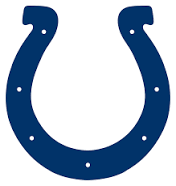Miami Dolphins
- Paul Grange

- Sep 24
- 2 min read

When Miami was awarded an AFL franchise in 1965 a fan contest was held – and Dolphins emerged as the winner: Sleek, fast, intelligent, and highly social, hunting in pods and communicating with clicks and whistles. In the Atlantic waters off Florida, bottlenose dolphins are a constant presence, surfing the waves, riding boat wakes, and thriving in the warm Gulf Stream. Some migrate north along the coast as waters heat up, while others stay resident in bays and estuaries. To pick “Dolphins” was to make the team part of that Florida ocean life — fast, clever, elegant. Perfect for a football team.
Miami itself has always been shaped by its waters. Long before Europeans arrived, the Tequesta people lived around Biscayne Bay, fishing and trading in a subtropical paradise. Spanish colonisers arrived in the 1500s, but it wasn’t until the late 19th century — with the railroad pushing south — that Miami began to grow. The city took its name from the nearby Miami River. The Miami River was named after the Mayaimi people, a Native American tribe who lived around Lake Okeechobee, which they called Mayaimi meaning “big water.”
By the mid-20th century it was the “Magic City,” rising seemingly overnight with art deco hotels on Miami Beach, Cuban immigration reshaping its food and music after 1959, and a reputation as a place where cultures collided under the Florida sun. Today it’s finance, fashion, nightlife, and cruise ships.
In the 20th century, waves of newcomers shaped its flavour: Jewish communities established hotels and businesses along Collins Avenue; Bahamian immigrants built much of Coconut Grove; Cubans transformed Little Havana after Castro’s revolution, filling Calle Ocho with cigar shops, salsa beats, and the smell of café cubano. Later arrivals from Haiti, Nicaragua, Colombia, and Venezuela added their own rhythms, flavours, and traditions, making Miami one of the most international cities in America.
The Art Deco district that rose in the 1930s gave Miami a visual identity as distinctive as any skyline, with its neon lights and curved façades evoking ships at sea. By the 1980s, the city was etched into the world’s imagination by television shows like Miami Vice and a new generation engaged with it through video games like GTA Vice City. Both were successful by blending the city’s pastel glamour with grittier stories of crime and opportunity. Today, the Wynwood Walls street art, the Latin American Book Fair, and the annual Art Basel show highlight Miami’s role as a cultural trendsetter.
The Dolphins quickly gave the city a team to match its flair. Under coach Don Shula, they produced the NFL’s only perfect season in 1972 — 17–0, capped by a Super Bowl win. They repeated the championship the next year, cementing themselves as a dynasty. Later, with Dan Marino firing passes in the 1980s and ’90s, the Dolphins became one of the most entertaining teams in the league, even if the Super Bowl eluded them.
The Miami Dolphins are an extension of the ocean they’re named for, a reflection of the city that rose on its shore, and a reminder that speed, intelligence, and community are as powerful on the field as they are in the sea.







Comments